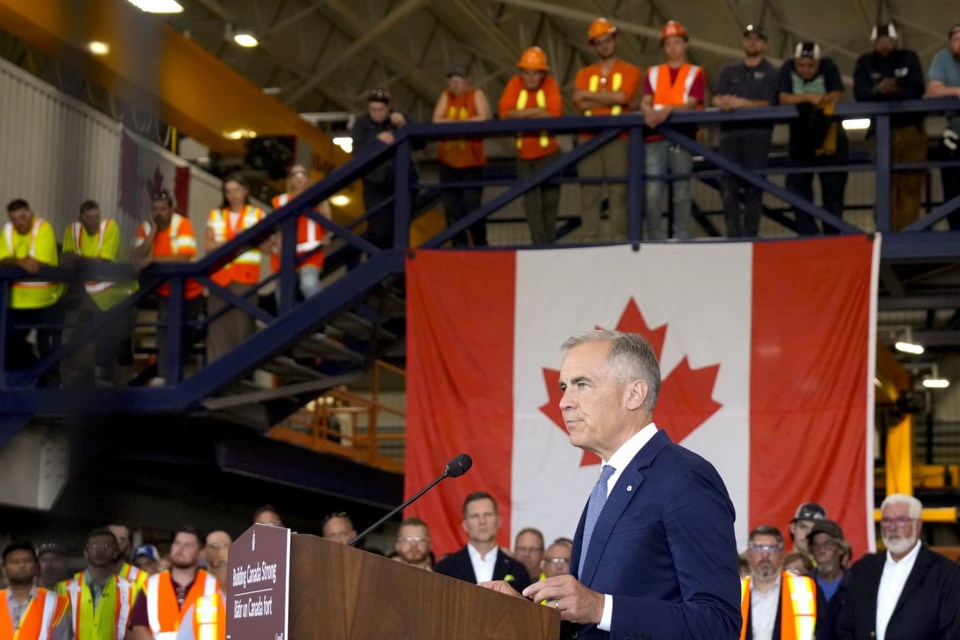Prime Minister Mark Carney announced tighter rules around steel imports this week. The move is an effort to protect Canada's domestic industry from "dumping" as the global trade of the metal undergoes major shifts because of government actions out of the United States and China.
Here's a look at some of the key questions.
What is dumping?
Dumping refers to foreign firms selling goods at artificially low prices, or prices that don't accurately reflect their cost of production. It can also include a company selling goods for less in foreign markets than comparable goods in their home market.
Companies tend to dump goods either by selling below cost to gain market share, or because an excess of production in their home countries has them looking for markets to off-load the goods and recover some costs.
Government subsidies can be a significant contributor to firms selling at artificial prices because they help distort price structures. While subsidies are widespread, including in Canada, they can go so far within international trade rules. Subsidies that artificially reduce costs so manufacturers can flood foreign markets at unfairly low prices crosses that line.
How big of a problem is steel dumping for Canada?
The steel industry has long insisted it's a problem, especially as it points to offshore imports climbing from 19 per cent of the Canadian market in 2014 to 39 per cent in 2022.
The industry also dominates anti-dumping inquiries at the Canadian International Trade Tribunal, the body tasked with determining whether imported goods are being sold at artificially low prices. The tribunal has largely ruled in favour of applications that dumping has occurred and is harming Canadian industry.
And while there are problems now, the bigger concern is how much more product, especially from China, might get diverted to the Canadian market as the U.S. moves to close off imports.
Some observes, however, say there's still not much data showing the problem getting worse.
"As far as I can tell, there is no imminent flood of imports into the Canadian market," said Dan Ciuriak, an international trade expert and senior fellow at CIGI, the C.D. Howe Institute, and others.
He said there is already so much trade distortion and protectionism in the global steel industry not much steel trades freely anyway, while the fear of metal that originated from China via other countries doesn't make a lot of sense economically, making the latest moves by Carney "overkill."
"That's all theatre as far as I'm concerned," he said.
There is however the threat it could as excess capacity grows globally, especially in China — where its 50 million tonnes of overcapacity could swell to 250 million tonnes over the next decade, according to Wood Mackenzie.
The problem of overcapacity is getting worse as the uncertainty caused by U.S. President Donald Trump's trade policies have made companies hesitant to go ahead on big projects, said Ciuriak.
"Demand is dying ... so the domestic industries want to claw back any kind of imports, even though that's not going to fix their capacity utilization problems."
How long has it been a problem?
A long time. Canada introduced the first anti-dumping provisions in the world in 1904, which singled out a “special duty on undervalued goods,” according to Ciuriak.
What was unique about the measure was that it was a flexible tariff, meant to make up the difference between the selling price and the fair market value.
The problem has continued and grown as global trade has increased, leading to growing calls to do more about it.
For steel, concerns have grown along with China's increased capacity and accusations of overgenerous state support, as its exports hit a record high last year of 115 million tonnes.
Back in 2020, United Steelworkers union national director for Canada Ken Neumann said the problem of illegal steel dumping needs to stop.
“Our union will continue to aggressively defend the jobs of steelworkers across Canada who for too long have been harmed by steel imports dumped into our country and sold at unprofitable, below-market prices.”
What do the latest tariffs aim to achieve?
Canada already imposed 25 per cent tariffs on imports of steel and aluminum from China last year, with the move coming into place in October.
But the steel industry and others have maintained that other countries are taking steel produced in China, processing it further and then trying to export it as originating from the there.
The latest measures are meant to help protect against that workaround, which is why the government imposed the 25 per cent tariff on steel products that were "melted and poured" in China.
The move is the culmination of years of efforts to increase transparency in steel imports, including a requirement that went into effect only last November for importers to declare the country the metal is melted and poured.
Catherine Cobden, head of the Canadian Steel Producers Association, said the measures will go some ways to tackle China's actions as an "egregious" overcapacity practitioner.
The added tracing and reporting requirements add costs, while the restrictions on imports don't seem to take into account that it's costly to move steel across Canada so places like the Maritimes and British Columbia depend on imports.
"It's just raising the cost of doing business in Canada."
In announcing the latest protection measures though, Carney insisted that they would help set the critical industry up for the long term and make it more resilient in the face of profound shifts in global trade and supply chains.
This report by The Canadian Press was first published July 18, 2025.
Ian Bickis, The Canadian Press




